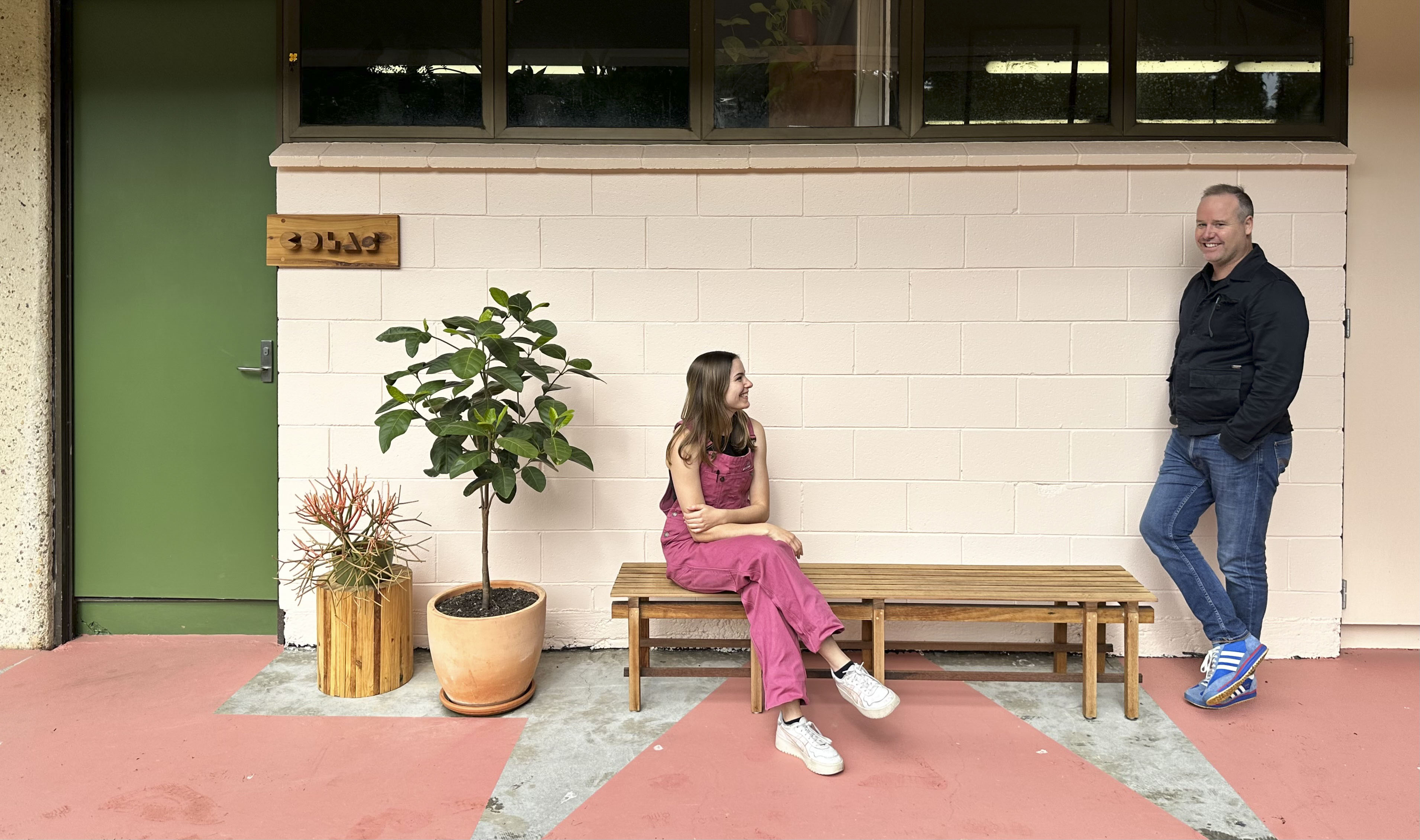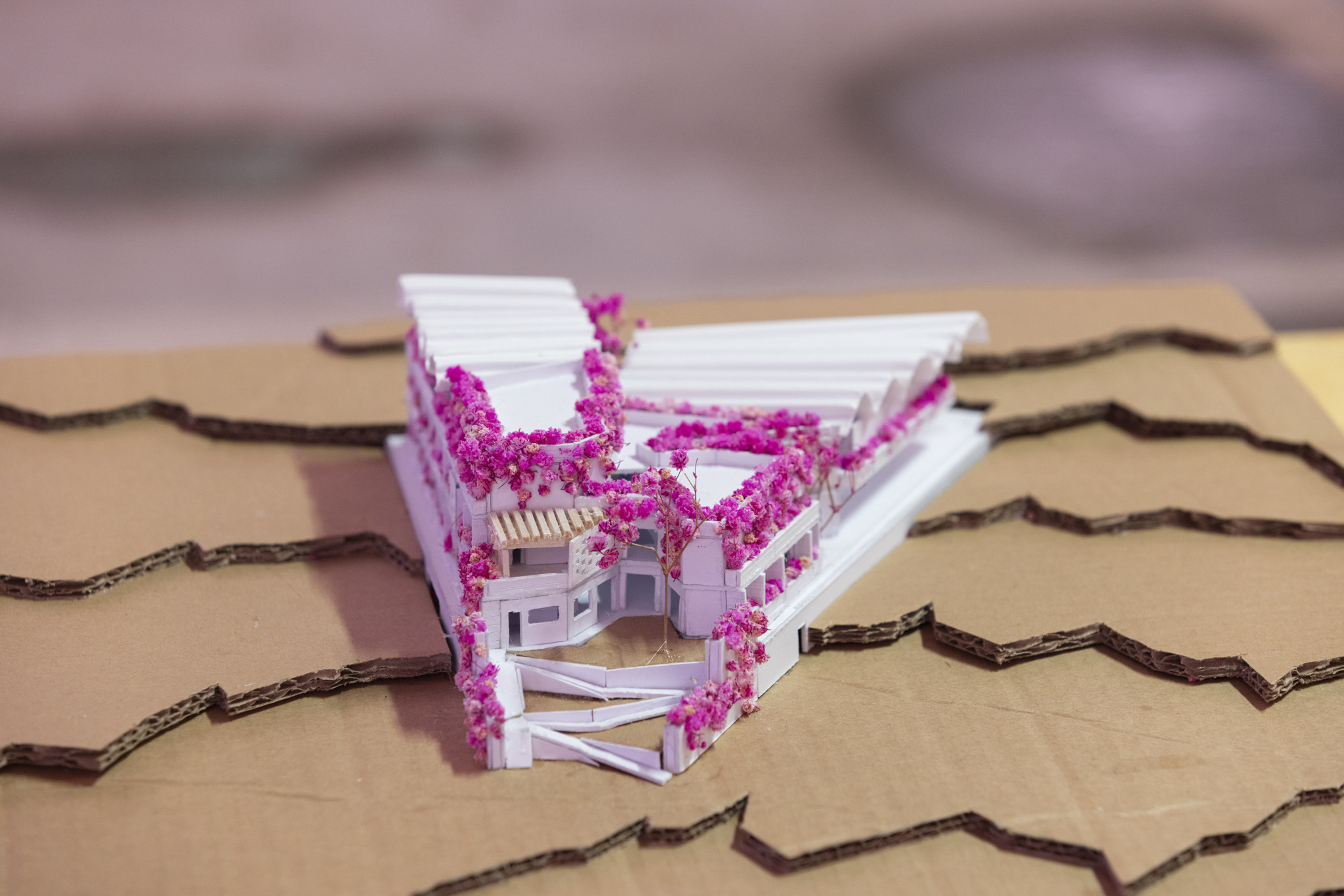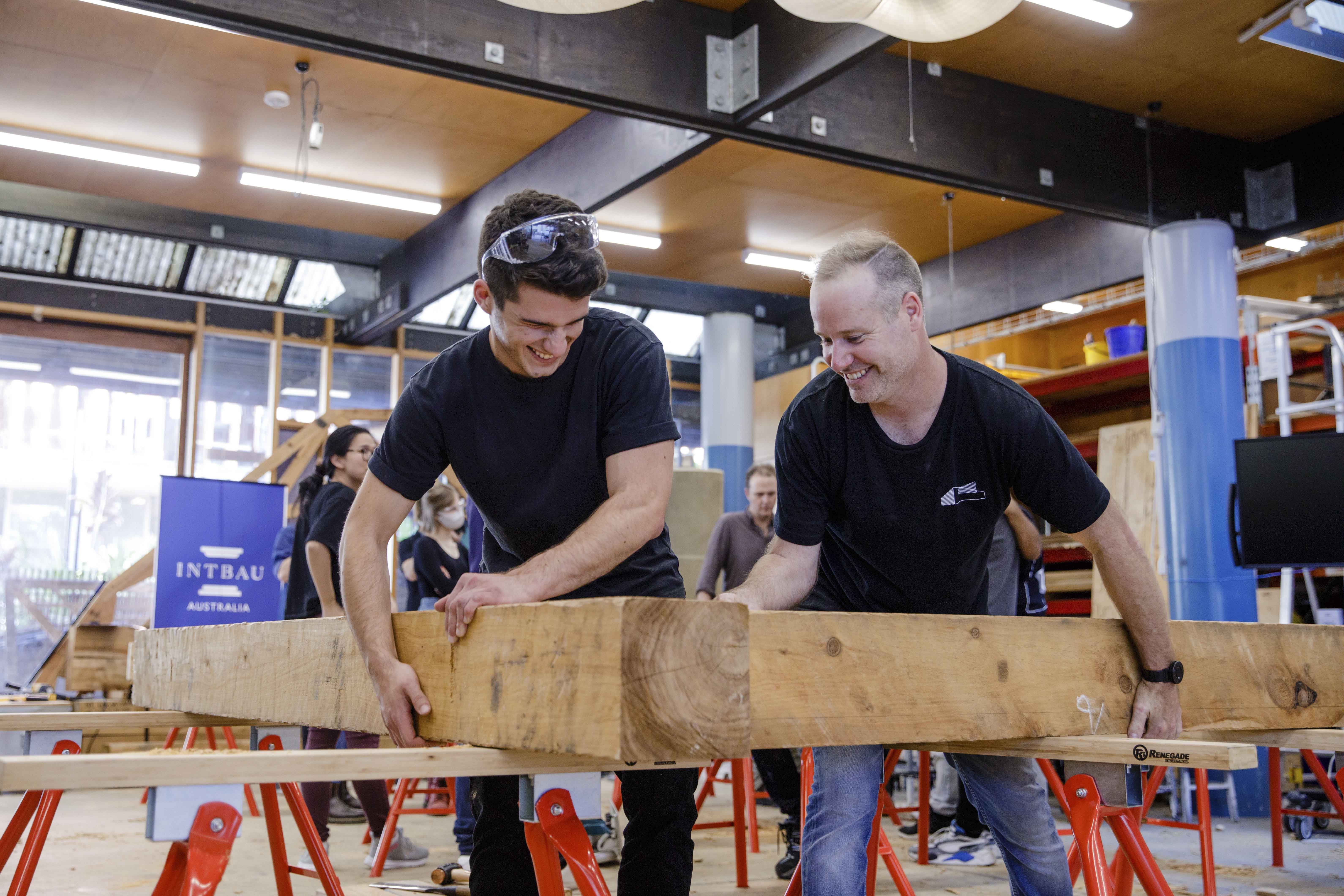Creating beautiful line drawings can inspire, tell a story and share intentions, but how do you translate what looks good on paper into a tangible space or product that works?
At UQ’s Collaborative Workshop (CoLab), architecture and design students can “learn by making” in a space that encourages freedom of experimentation and the translation of ideas into a tactile, real-world setting. The CoLab provides facilities and equipment for model-making and 1:1 scale prototyping, and is run by two technical officers who train and support students in the space.

“By testing in 3D form, failed designs, flaws and underdeveloped details become learning tools, helping students to better understand their project’s constraints and create transformative solutions,” says Sonya Brown, Technical Officer in the Faculty of EAIT.
“This leads to better knowledge of how design and construction collaborate and how we can become better designers.”
Located on the ground floor of the Zelman Cowen Building at St Lucia, the CoLab is available to all students in the School of Architecture, Design and Planning (ADP). It is equipped with a full range of hand tools, woodworking machinery, a flatbed CNC router and laser cutters, and offers a variety of model-making materials available for purchase.
Students are encouraged to use the CoLab as an informal study space where they can test their designs with 3D forms and make “creative mistakes.”

“On a typical day during the semester, students will pop in from their studios upstairs with drawings, laptops, and their big list of ideas of what they want to achieve in their design. They set up in the CoLab for a couple hours, working on scaled models testing different forms or varying joins,” says Sam Butler, Senior Technical Officer in the Faculty of EAIT.
“They sometimes take their process models back upstairs to discuss them with the tutor and we’ll see them come back down with a whole new set of questions for us.
“We have found that students learn more successfully and with a higher degree of knowledge and skills when they take this hybrid approach of combining theoretical learning and practical exploration.”
At UQ, students are immersed in a vibrant studio culture that allows them to learn the necessary rhythms and processes of design through a repetitive cycle of thinking, doing and reflecting. All students work in hand-drawn and digital media for work-in-progress and final drawings, as well as physical models at varied scales and stages, as foundations to developing design thinking.

The CoLab workshop is an extension of the architecture and design studios and plays a vital role in supporting an iterative design process. Experimentation and prototyping also gives students an enhanced understanding of how materials work together and in turn supports them in delivering succinct, coherent drawings and better communication to the builder, developer or manufacturer.
Architectural graduate Emma Smith, who completed her Master of Architecture at UQ, says her time in the CoLab was crucial to the success of the models and overall design outcomes for her projects.
The Advanced Architectural Design: Generative Structures course that Emma completed offered her the opportunity to spend time constructing a 1:1 model of a timber detail from her design. With support from Sam and Sonya in the CoLab, she built a component of her facade.
“Having the ability to work hands-on with the materials helped me to engage with the complexities of the construction process, and fully understand the technical aspects of my design,” says Emma.
“Sam and Sonya’s support in workshopping ideas and designing solutions not only elevated the quality of my project, but also facilitated a semester where I felt I could fully engage with the course content and gain the most knowledge from my design course.”

Master of Architecture student Harold Chandler agrees on the significant value of the design discussion that happens in the CoLab.
“Through the process of making, Sam and Sonya provide valuable design insight relating to materiality, form and detailing, that not only results in a better physical model outcome but also increases the validity and architectural resolution of the final project,” he says.
“After testing our ideas in the infinite (and never ending) digital realm or through constant streams of tracing paper, nothing will give a better representation of our ideas than a physical model.”
Isabella Casarolli Valery, a second-year Bachelor of Architectural Design student, says she knows of friends who have found their first job in the industry through “having a good project model.” She says tutors also reinforce the power of a good model to communicate design ideas.
“It’s easy to get sucked into the detail of the brief and the presentation requirements – and it’s normally at this point that I pop down to the CoLab to get a fresh take on how my project is going,” says Isabella.
Dr Cathy Keys, Senior Lecturer in the School of ADP, says model-making, hands-on learning and material experimentation are hugely beneficial to students’ future career knowledge. She has used the CoLab space to teach master’s students in research selectives and architectural design subjects and has run intensive hand-building workshops for students, engaging craftspeople with vernacular building techniques.
“It is critical students have the opportunity to work with tools and experiment in joining materials at 1:1 scale,” says Dr Keys.
“The space and resources in the CoLab allow students to learn by making and this has been invaluable as an extension and compliment to an increasing dependence on digital design methods.”

While “learning by making” isn’t a new concept, it continues to be an important part of design education at UQ, benefiting both the profession and end users.
By learning from a perspective more closely related to the builder, students can better understand the finer details of how two elements will react, the true scale of built components and what is comfortable for humans to use, and how much structure and rigidity is needed to withstand everyday use.
“The CoLab as an integral step in this translation process, where ideas can be adapted, and a design ‘mistake’ can be transformed into a whole new idea,” says Ms Brown.
“The CoLab might have a small footprint in the scheme of makerspaces, but it supports students and researchers to take great steps in realising their designs and coming up with innovative, tangible solutions.”

Recent projects created in or with the CoLab include UQ’s installations for the Botanica exhibition, installations for the Purpose Built exhibition at State Library Queensland, ADP Graduate Exhibitions, the Blue Bower project as part of the Seoul Biennale 2021, the UQ Bloom Festival installation, Enduring Design Masterclass courses, heritage analysis workshops and furniture making courses, among many others.
The CoLab will be open for visitors from 9am - 12pm at the upcoming UQ St Lucia's Open Day, 4 August 2024. Be sure to stop by and speak with staff to find out more about how students can use this space throughout their studies and check out plenty of models on display.



